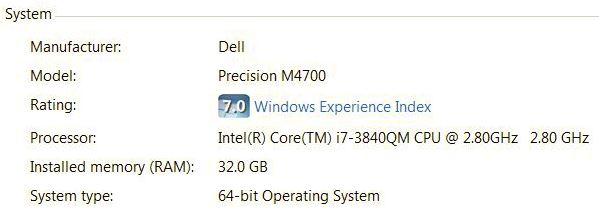
- OFFICE 2010 64 BIT VS 32 BIT HOW TO
- OFFICE 2010 64 BIT VS 32 BIT DRIVERS
- OFFICE 2010 64 BIT VS 32 BIT 64 BITS
- OFFICE 2010 64 BIT VS 32 BIT SOFTWARE
- OFFICE 2010 64 BIT VS 32 BIT MAC
This combination will provide the best possible performance.This post provides 4 ways with detailed guides for how to download and install Windows 10 64 bit or 32 bit OS for your PC or laptop. In all other cases, it is best to buy 64-bit hardware, install a 64-bit operating system, and run 64-bit applications. If you have a 64-bit system but have some mission critical peripherals that do not have 64-bit drivers, installing a 32-bit OS might be your best option. However, if you have a 32-bit computer, you have no choice but to install a 32-bit OS. If you are installing software, it's important to know what type of operating system your computer is running, so you can install the correct version. If you're installing an operating system, it's important to know what type of processor your computer has so you can install the right one.

Hopefully the above explanation has given you a better understanding of what 32-bit and 64-bit mean in reference to hardware and software.
OFFICE 2010 64 BIT VS 32 BIT DRIVERS
Additionally, device drivers are often written for specific operating systems, so it is important to install 32-bit drivers if you are running a 32-bit OS and 64-bit drivers if your operating system is 64-bit.
OFFICE 2010 64 BIT VS 32 BIT SOFTWARE
In these cases, you will need to install the version of the software that corresponds to your OS (which may be different than your hardware). The 64-bit OS will allow your computer to access more RAM, run applications more efficiently, and, in most cases, run both 32-bit and 64-bit programs.Įxceptions to this rule include system utilities and antivirus programs that are written specifically for a 32 or 64-bit operating system. While it is possible to install a 32-bit operating system on a 64-bit system, it is best to install a 64-bit version if possible.
OFFICE 2010 64 BIT VS 32 BIT MAC
If you have a Mac and you are running OS X 10.7 or later, your OS is 64-bit. In Windows, you can check your OS version by right-clicking My Computer, selecting Properties, and clicking System to view the system type. Therefore, if you bought your computer in 2009 or later, there is a good chance you are running a 64-bit operating system. Around 2008, 64-bit versions of Windows and OS X became standard, though 32-bit versions were still available. In order to run a 64-bit program, your operating system must be 64-bit. This is because 64-bit applications include 64-bit instructions that will not be recognized by a 32-bit processor. So how does 32-bit or 64-bit hardware affect software? Generally speaking, 32-bit programs can run on a 64-bit system, but 64-bit programs will not run on a 32-bit system. They also support 64-bit instructions and have 64-bit data paths, which enables them to process more data at once than 32-bit systems can. For example, 64-bit systems run more efficiently since memory blocks are more easily allocated.
OFFICE 2010 64 BIT VS 32 BIT 64 BITS
While 64 bits is far more storage than what modern computers require, it removes all bottlenecks associated with 32-bit systems. Otherwise, at least 12 GB of the memory will be inaccessible by the CPU. If a computer has 16 GB of RAM, it better have a 64-bit processor. What's important is that a 64-bit computer (which means it has a 64-bit processor) can access more than 4 GB of RAM. This is several million times more than an average workstation would need to access. The actual limit is often less – around 3.5 gigabytes – since part of the registry is used to store other temporary values besides memory addresses.Ī 64-bit register can theoretically reference 18,446,744,073,709,551,616 bytes, or 17,179,869,184 gigabytes (16 exabytes) of memory. One bit in the register can reference an individual byte in memory, so a 32-bit system can address a maximum of 4 gigabytes (4,294,967,296 bytes) of RAM. The CPU register stores memory addresses, which is how the processor accesses data from RAM.

That's a big difference, but how does it affect computing performance? Therefore, a 64-bit register is not twice as large as a 32-bit register, but is 4,294,967,296 times larger. A 32-bit processor includes a 32-bit register, which can store 2 32 or 4,294,967,296 values. Hardwareģ2-bit and 64-bit are commonly used to describe processor architecture or design. However, when determining what software to install on your computer, it is helpful to understand what the terms actually mean.

Do they refer to hardware or software specifications? What makes a system 64-bit and what is the difference between a 64-bit computer and a 32-bit model? In most cases, you simply need to know if your operating system is 32-bit or 64-bit in order to run a certain program. The terms "32-bit" and "64-bit" are commonly seen in system requirements and other technical literature, but few people actually know what these terms mean.


 0 kommentar(er)
0 kommentar(er)
